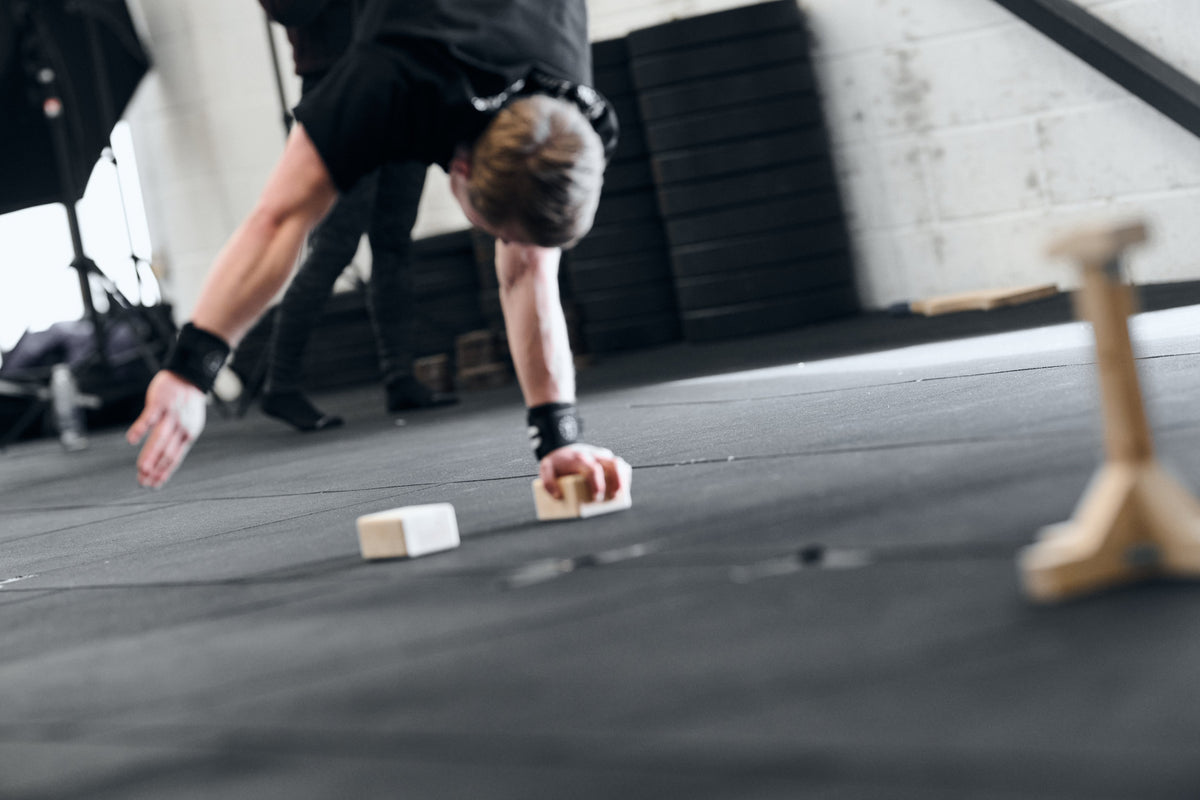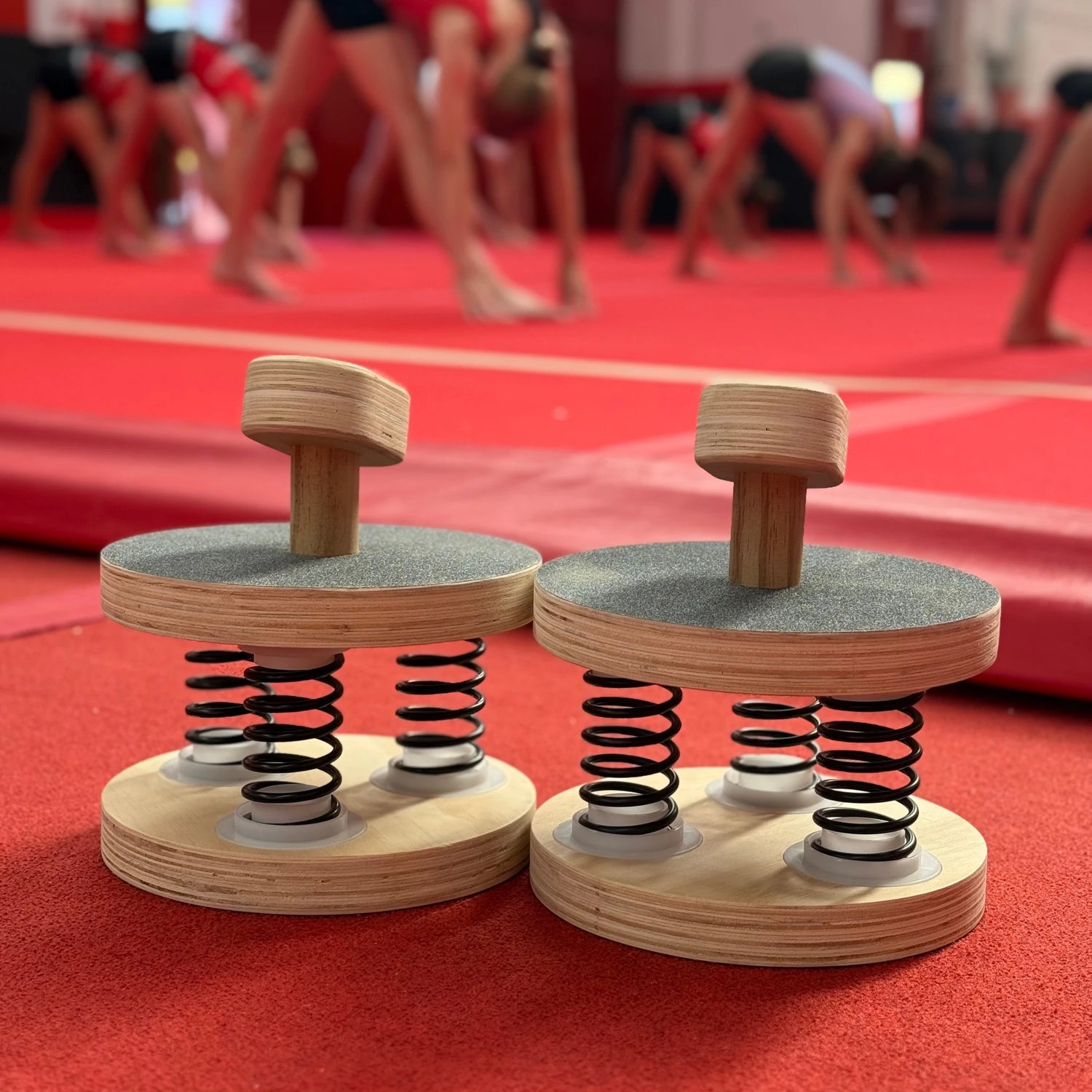
Gymnastic Handstand Blocks: Everything You Need to Know 2025
|
|
Time to read 5 min

Check out our exciting new balance product launches. Developed and tested by...
|
|
Time to read 5 min
Handstands are one of the most fundamental skills you can incorporate into your gymnastics to improve your balance while increasing your circulation and bone health.
Staying upside down forces you to engage your entire body, including the arms, shoulders, lower back, and inner thighs, eventually giving you incredible mobility and a super-strong core.
However, to be able to do handstands, you require flexibility, coordination, and balance. There are various ways you can get into a handstand, but gymnastic handstand blocks make a real difference to not just your balance but your endurance, allowing you to train longer.
Handstand blocks come in different sizes and shapes, making it difficult to know exactly what you need.
This article delves deep into everything you need to know about handstand blocks, including what they are, how to use them, and their potential benefits.
Gymnastic handstand blocks are portable devices used in hand balancing. These popular tools can be made of any material, but the most common ones on the market are made of high-quality cuts of wood or stacked plywood.
The blocks are typically made of sturdy material with a size big enough for your hands to have a strong grip.
Ideal for yoga practice and other calisthenics, handstand blocks should give you much better control and a firm grip that improves both your finger and wrist strength. Training handstands with your hands resting on a flat surface, such as the floor, exerts a lot of strain and stress on your wrists.
Comparably, practicing handstands on gymnastic handstand blocks helps re-distribute the weight on your wrists and hands. This small variation in your training spares your wrists from flexion, relieving them from much strain.
Gymnastic handstand blocks are commonly available in two forms; slanted/curved shaped and square/rectangular shaped.
It’s a matter of personal preference when choosing your ideal gymnastic handstand blocks. However, curved blocks spare your wrists too much pressure by putting them at less of an angle.
This makes them an ideal option when you need to continue training, especially if you have wrist pain or injury from too much exercise.
Gymnastic handstand blocks are ideal for both beginners and advanced gymnasts. For beginners, blocks are a great way to improve their handstand skills and balance, whilst reducing wrist pain and pressure.
Professional users can stack blocks to enjoy a kick-up experience in their handstand journey. Blocks allow advanced users to practice different variations of handstands, such as handstand roll-overs and one-arm handstands.
However, while it's easier to do a handstand on blocks, you need a lot of practice and mastery to do solid handstands on these tools.
We’ve put together the 4 hottest tips for getting the most out of your gymnastic handstand blocks, to make sure you are on the right track with getting the most from your handstand blocks.
As mentioned earlier, handstand blocks come in many sizes and shapes. As such, getting a perfect size that gives you extra grip and control is important.
Your fingers should firmly grip over the edges of each block, ensuring less pressure on your wrists and forearms during inversion.
A comfortable block with smooth, well-finished edges is only going to encourage you to use them more, so be sure to choose a handstnad block that is super comfortable to use.
Besides improving your level of training, handstand blocks also enhance safety. To avoid injuries, don't place your fingers directly underneath your blocks when doing a handstand.
Instead, you should rest your palms flat on top of the block while your fingers grip firmly over the edges.
It’s important that you first test your strength before training handstands to know if your wrists are strong enough to carry your approximate weight.
This is especially true for beginners, as they often have inadequate wrist and forearm strength. It’s also vital not to put all your weight on your fingers as it can cause small blemishes and damage to the fingers.
Gymnastic handstand blocks will reduce pressure on your wrists, but consider using wrist wraps also.
A personal trainer, training partner, or handstand expert can help you distribute your weight evenly across your arms and palms while you're still getting to grips, (sorry!) with your gymnastic handstand blocks.
If your arms are bent when doing a handstand, it’ll be difficult to hold your position for very long. Bent arms can also cause elbow and wrist injuries while increasing the risk of landing on your head.
Your arms tend to be stronger when in a straight position. To maintain straight arms, ensure your arms are glued to your ears, and your thighs are squeezed together.
Whether you do handstands against a wall, or you’re a freestanding pro, this exercise offers numerous benefits for your health and general well-being.
Handstands are a therapeutic practice that can refresh your brain and promote the release of feel-good hormones (endorphins), improving your mood and relieving stress.
Handstands also increase your strength, confidence, bone health, and breathing. That said, there are many natural ways to improve your handstand training.
1. Squeeze Your Butt And Thighs
Failing to squeeze your butt and thighs is a common mistake among beginners. When you’re in a handstand, you should squeeze everything together the entire time, including your glutes, thighs, and legs. This creates tension throughout your body, giving you better stability.
2. Use Your Shoulders To Push
Once you kick up into a handstand, immediately start pushing through your shoulders. In other words, start pushing your arms away from the ground while stabilizing your body in an upright position.
This gives you better balance and keeps you from falling backward or collapsing into your shoulders during a handstand.
3. Improve Your Focus
One of the most important things to maintain balance when doing a handstand is finding a focus point. You can select any focus point behind you and stare at it without moving your eyes or craning your neck.
While at it, you can incorporate other tricks, such as keeping your abs tight and squeezing your legs together.
4. Do The Handstand Wall Walk
Use a wall for support. Place your hands in the correct, comfortable position and walk your feet up the wall, as high as you can control.
Once you have found your centre of balance, you can use your toes to gently nudge your body away from the wall to get a sense of a free-standing handstand.
Next, walk your feet back down on the wall’s surface area to the starting position. Be sure to keep your arms straight throughout the wall walk. This helps build up your shoulder strength, stability, and endurance.
Handstands are great exercises that enhance your balance and bone health while offering benefits such as improved circulation and breathing - not to mention being lots of fun!
Gymnastic handstand blocks are powerful tools that can improve your inversion skills by increasing your grip strength, flexibility, and arm balance, whilst reducing pressure on your wrists and giving you the added bonus of providing somewhere for your hands to 'grip'.
These portable blocks are available in numerous shapes, sizes, brands, and colour options, so you need to pick the blocks that are perfect for you.
If you haven't already, why not take a look at our shop, and check out our smooth, comfortable, and light-weight gymnastic handstand blocks?


